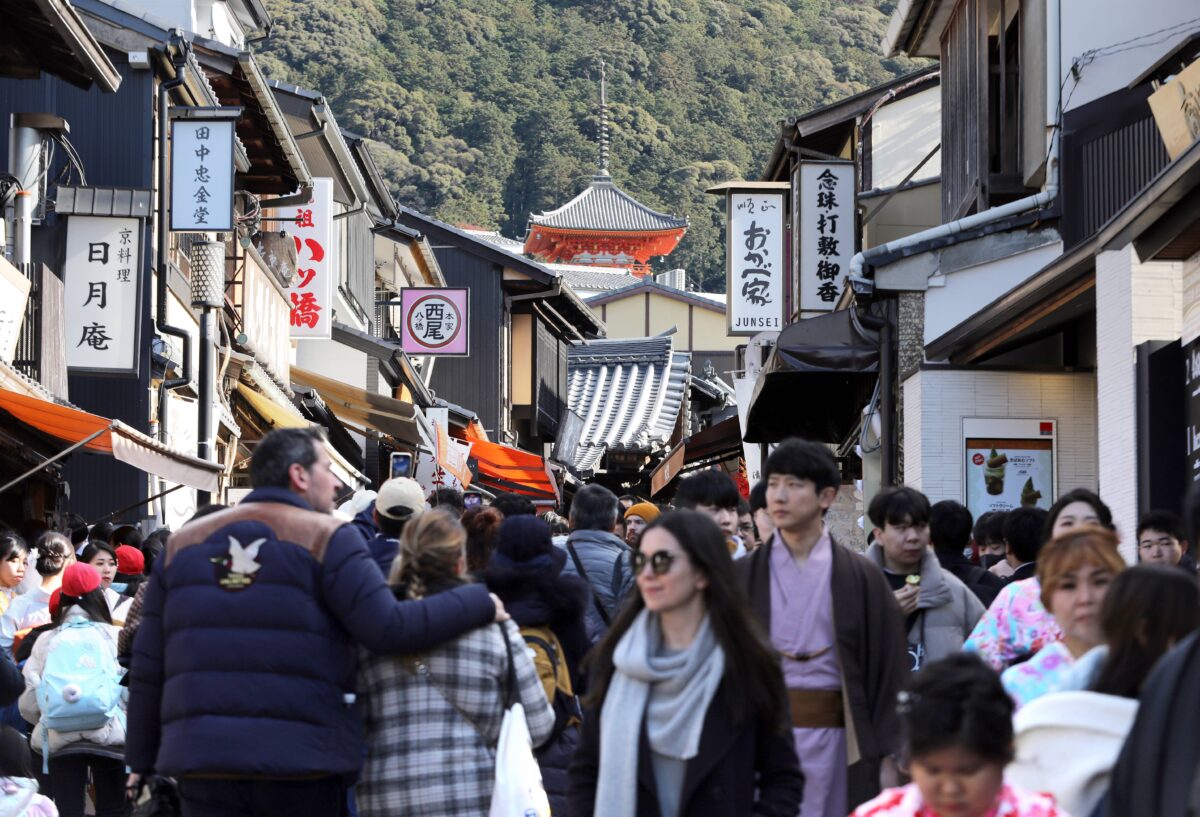Japan’s ‘Three Hopes’ for Southeast Asia at Expo 2025 Osaka
TOKYO — Expo 2025 Osaka, showcasing new cultures and the latest technologies of the era, will take place over 184 days from April 13 this year to October 13 next year at Yumeshima, an artificial island in Konohana Ward in the city of Osaka. The theme of the Expo is “Designing Future Society for Our Lives.”
In Osaka, a city with numerous advanced medical research institutes, this theme—focused on addressing the challenges of a super-aging society—resonates with developing countries that will eventually face similar aging issues. At the event venue, visitors will see electric buses equipped with Level 4 self-driving technology and electric flying cars capable of vertical take-off and landing. Historically, many technologies have gained widespread use after being introduced at past Expos, such as telephones, elevators and movies. This track record raises hopes that the upcoming Expo will unveil new innovations that will enrich lives in the future.
While 161 countries, regions and 9 international organizations have expressed their intention to participate in Expo 2025 in Osaka, special attention is directed toward Southeast Asian nations. Indonesia, Malaysia, the Philippines, Singapore, Thailand, Brunei, Vietnam, Laos, Cambodia and East Timor have confirmed their participation. Japan holds high hopes for Southeast Asia in three key areas.
Pavilions at the Expo site
The first area of focus will be the pavilions which will be built by individual countries. They will be clustered within the Grand Ring, one of the world’s largest wooden structures, boasting a circumference of about two kilometers and serving as a symbol of Expo 2025 in Osaka.
Hiroyuki Ishige, secretary-general of the Japan Association for the 2025 World Exposition, said in a lecture in late July that “countries from around the world plan to construct attractive pavilions,” specifically drawing attention to Singapore, Thailand and Indonesia, along with Germany and Saudi Arabia.
Singapore’s pavilion features an innovative red sphere with a diameter of 18 meters, symbolizing the country’s nickname, “The Little Red Dot.” On world maps, Singapore is often represented as a small red dot near the equator. The pavilion is designed with a strong focus on environmental sustainability, using recycled materials for the sphere and incorporating solar panels on the roof to generate power.
Article continues after this advertisementThailand’s pavilion boasts a strikingly curved roof, reminiscent of a ski jump, incorporating traditional construction methods and wood. Under the concept of “Immunity,” the pavilion will be adorned with sculptures of elephants, symbols of prosperity and longevity, near its entrance. Highlights will include showcases of Thailand’s advanced medical technologies, healthy traditional dishes, and workshops on therapeutic practices using Thai herbs.
Article continues after this advertisementIndonesia’s pavilion is themed around the motif of a “Ship,” reflecting the nation’s identity as the world’s largest archipelago, with over 17,000 islands. The design symbolizes the culture and traditions shaped by the movement of people between these islands by sea. The pavilion will also underscore Indonesia’s current efforts to relocate its capital from the overcrowded and polluted Jakarta to a new city, a move aligned with the country’s commitment to achieving the U.N. Sustainable Development Goals (SDGs).
Other countries are also aiming to make a strong impression at the Expo. The Philippines will construct a pavilion designed to resemble traditional basketwork, underscoring the nation’s rich diversity and history. Laos will focus on the theme of a green growth economy for sustainable development.
Stronger business collaborations
The second area of focus is on strengthening business collaborations. The Osaka Chamber of Commerce and Industry (OCCI) plans to host a symposium next year in line with Expo 2025, inviting leaders of economic organizations from Southeast Asia. Following the celebration of the 50th anniversary of friendly cooperation between Japan and the Association of Southeast Asian Nations (Asean) last year, the OCCI established the Asean-Japan Business Promotion Platform in collaboration with economic organizations from six major Asean countries—Indonesia, Malaysia, the Philippines, Singapore, Thailand and Vietnam. Together, they have been addressing challenges such as environmental and energy issues and enhancing the resilience of supply chains.
The OCCI aims to leverage Expo 2025 as an opportunity to deepen ties with Asean countries, which are experiencing significant economic growth. Additionally, plans are underway to introduce quick response (QR) code payment systems from Singapore, Malaysia, Indonesia, the Philippines, Thailand, Cambodia, Vietnam and India for use in Japan ahead of the Expo.
Southeast Asian nations also view Expo 2025 as a significant business opportunity. Zafrul Abdul Aziz, Malaysia’s Minister of Investment, Trade and Industry, has said that the country expects to secure potential investments and export opportunities totaling 13 billion ringgit (approximately 3 billion dollars) by participating in Expo 2025. At the previous Expo 2021 in Dubai, Malaysia achieved 8.3 billion ringgit (about 2 billion dollars) in trade and investment opportunities through the involvement of over 400 Malaysian companies. With ambitions for even greater success at Expo 2025, Malaysia plans to showcase its advancements in sustainable agriculture, sophisticated manufacturing and ecotourism at its pavilion.

Kiyomizu-zaka street, which leads to Kiyomizu Temple, is crowded with tourists in Kyoto’s Higashiyama area, 2023. (c) Jiji Press
Visitors from Southeast Asia
The third hope for Japan is the positive impact Expo 2025 will have on visitors from Southeast Asia.
According to the Japan National Tourism Organization (JNTO), there were 2,157,500 visitors from six major Asean countries in the first half of this year, representing 12.1 percent of all international visitors. The six-month figure surpasses the number recorded in the first half of 2019, marking the first time it has exceeded pre-COVID-19 pandemic levels.
Southeast Asia’s resilience is particularly notable, with a significant portion of these visitors being repeat travelers. To continue attracting this audience, new and engaging content is essential. Expo 2025 is expected to provide just such an opportunity to attract these valued guests.
In late February, the Kansai Bureau of Economy, Trade and Industry invited Thai travel agency representatives to explore travel options in the western Japan region of Kansai. During their five-day visit to five prefectures, the delegates experienced a range of local activities, including preparing “matcha” green tea in Wazuka, Kyoto Prefecture, a town renowned for prized “Uji-cha” green tea, producing ink sticks in the city of Nara and crafting “washi” Japanese paper in the city of Echizen, Fukui Prefecture. Additionally, personnel from the Japan Association for the 2025 World Exposition briefed them on the forthcoming Expo’s theme and pavilion construction progress.
The representatives responded positively, with one noting, “We plan to develop a tour that starts from the Expo.” Nearby Okayama and Tottori prefectures are also working to attract Southeast Asian tourists through Expo 2025. While international visitors often focus on Osaka and Kyoto, expanding their experiences to lesser-known destinations could create mutually beneficial relationships, enhancing the appeal of Japan and providing value to Southeast Asian countries.
To meet these goals, Japan’s “omotenashi” hospitality will be put to the test. During discussions between Southeast Asian travel agency representatives and officials from Japanese organizations, several needs were highlighted.
A Thai official noted that Thai tourists seek unique experiences to share on social media, while another mentioned that the summer heat might make long walks challenging for them. Meanwhile, representatives from Malaysia and Indonesia emphasized the importance of having staff familiar with the needs of Muslim tourists, including dietary considerations. The key question is how effectively Japan can accommodate such diverse requirements. Japan’s commitment to genuine hospitality will be pivotal in meeting these expectations.

